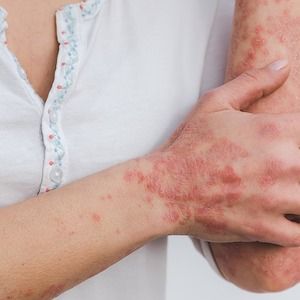Article
Sexually Diverse Individuals More Likely to Have Atopic Disease Compared to Heterosexuals
Author(s):
This new data highlights the need to address certain sociocultural, socioeconomic, and environmental factors that can more strongly affect individuals in minority groups.

Sexually diverse individuals, compared to heterosexual individuals, have higher rates of atopic diseases (atopic dermatitis, asthma, and allergic rhinitis), according to recent findings.1
These study results highlight possible influences from unique socioeconomic, sociocultural, and environmental factors on those with atopic disease who self-identify as being gay, lesbian, bisexual, or other.
The findings resulted from a recent study conducted to expand upon the limited data available on the prevalence of atopic disease among those described as sexually diverse. The research was authored by Katelyn J. Rypka, BS, from the Department of Dermatology at University of Minnesota Medical School in Minneapolis.
“Limited data exist on the prevalence of AD among SD people,” Rypka and colleagues wrote. “We investigated the association between atopic diseases and sexual orientation among US adults.”
Background and Findings
The investigators conducted a cross-sectional study which used data collected from the 2021 National Health Interview Survey, excluding individuals with missing data on covariates, sexual orientation, or primary outcomes.
The team’s study followed the STROBE reporting guideline and defined sexually diverse individuals as being those who identified as gay, lesbian, bisexual, or other, while heterosexual individuals identified as straight.
Age-adjusted prevalence rates were calculated by the investigators, and they used logistic regression to assess crude and multivariable-adjusted odds ratios for atopic dermatitis, asthma, and allergic rhinitis, comparing both heterosexual and sexually diverse individuals across all respondents and in sex-stratified analyses.
The investigators noted that the prevalence of atopic dermatitis was determined based on self-reported symptoms and physician diagnosis, and multivariable-adjusted analyses controlled for various factors such as sex, race, age, and ethnicity, income, nativity, region, urbanicity, level of education, insurance status, use of healthcare, access to healthcare, smoking status, and body mass index (BMI).
The research team’s final sample consisted of 27,012 respondents, including 25,701 heterosexual individuals (mean age 48.9 years, 53.7% females, and 46.3% males) and 1,311 sexually diverse individuals (mean age 36.9 years, 57.9% females, and 42.1% males).
In their multivariable-adjusted analyses, the investigators reported that sexually diverse individuals were found to have higher likelihoods of reporting atopic dermatitis (11.1% compared to 7.2%; adjusted odds ratio [AOR] 1.49; 95% CI, 1.19 - 1.86), asthma (12.0% compared to 7.8%; AOR 1.39; 95% CI, 1.13 - 1.71), and allergic rhinitis (33.7% compared to 25.6%; AOR 1.30; 95% CI, 1.11 - 1.51) compared to heterosexual individuals. The results were consistent when analyzed separately by sex.
Overall, the investigators concluded that their cross-sectional study, conducted using a nationally-representative sample of US adults, demonstrated that those identifying as sexually diverse show a higher prevalence of atopic diseases, including atopic dermatitis, compared to heterosexuals.
Additionally, they noted that while further research is necessary to comprehend the underlying causes, it is speculated that specific environmental exposures and behavioral and sociocultural factors relevant to those who are sexually diverse may contribute to these disparities.
The team suggests that these individuals are more likely to reside in urban areas, seeking reduced stigmatization, marginalization, and more supportive communities. This may result in unequal exposure to environmental triggers such as occupational hazards, air pollutants, and secondhand smoke.2
Additionally, the team stated that systemic discrimination and bias which can be faced by sexually diverse individuals may be a hindrance to their access to quality healthcare and contribute to minority stress, a chronic stress stemming from repeated exposure to violence, discrimination, and marginalization, which has been linked to the development of atopic diseases like AD, asthma, and allergic rhinitis.
The investigators added that racial and ethnic minority groups, particularly non-Hispanic Black and Latinx or Hispanic individuals, also report higher rates of atopic diseases in the US, likely influenced by similar discriminatory forces and marginalization.
“Intersectional studies have found that individuals with both racial or ethnic minority and SD identities may be at highest risk for certain atopic diseases,” they wrote. “Study limitations include self-reported survey data, potential recall bias, and lack of data on gender identity.”
References
- Rypka KJ, Woldu A, Boos MD, Maguiness SM, Mansh MD. Prevalence of Atopic Diseases Among Sexually Diverse Adults in the US. JAMA Dermatol. Published online July 12, 2023. doi:10.1001/jamadermatol.2023.1934.
- Goldsmith L, Bell ML. Queering environmental justice: unequal environmental health burden on the LGBTQ+ community. Am J Public Health. 2022;112(1):79-87. doi:10.2105/AJPH.2021.306406.





